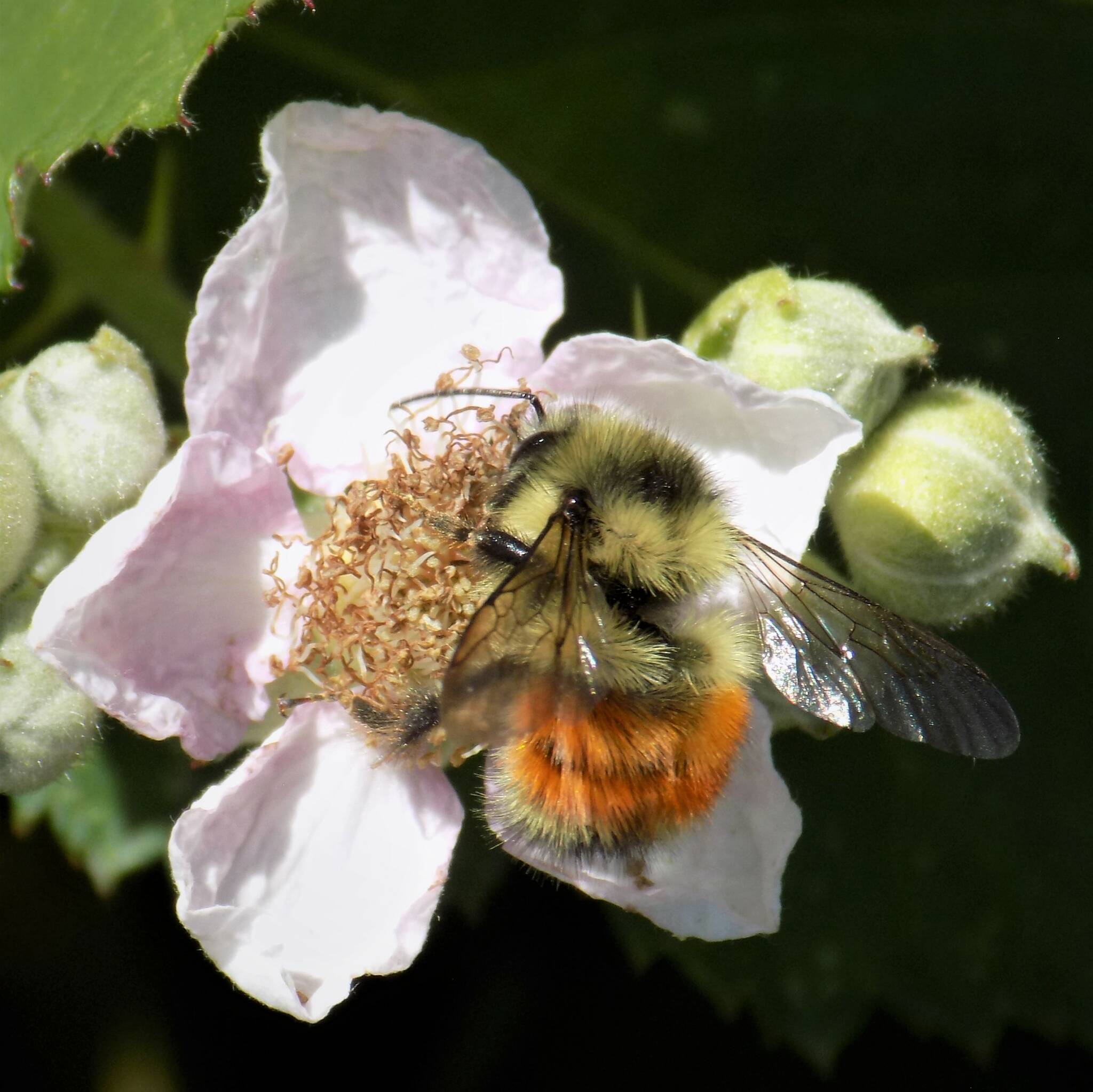By Russel Barsh, Director of Kwiaht.
For more than 150 years, farmers and gardeners have introduced hundreds of Eurasian plant species to the San Juan Islands and with them, albeit unwittingly, hundreds of Eurasian insect pests and some beneficial insects as well. Nonetheless, the most important pollinators of the islands’ wildlands—and a majority of island gardens—are native bumblebees. They are often the first wild bees to emerge in spring and the only bees that we have observed routinely flying from larger to smaller islands over salt water.
Bumblebees are well adapted to a complex mosaic of homes and small farms scattered among a hundred islands. They are slow but persistent long-range flyers that can carry half their weight in pollen, making it possible for them to embark on lengthy foraging journeys. Living as extended-family groups in discretely hidden waxy underground nests, bumblebee workers cooperate like their evolutionary cousins, the Eurasian honeybees, increasing the likelihood of collective survival in challenging landscapes full of both native and exotic flower, and a changing climate. But most important of all, as recent research has illuminated, bumblebees are smart.
And they learn from watching one another. When a bumblebee worker discovers a patch of pollen-rich flowers, she flies around it several times, building memories of smell, color, and orientation relative to the landscape and the sun.
Returning home, she shares this information with her sisters. Unlike honeybees, bumblebees do not communicate floral locations by “dancing,” but rather through a chemical language of aromas. Workers also frequently forage in family groups, beginning with early spring flights by the queen with her first cohort of daughters.
Confronted with an unfamiliar flower—a frequent occurrence for garden visitors—a bumblebee will investigate, whereas most pollinators move on to a flower they recognize. Experiments have shown that bumblebees quickly learn to associate pollen rewards with unnatural colors and to open puzzle boxes, which are a bit like complexly folded flowers. What’s more impressive is that the discovery seems to be passed along to the entire family; sisters of the successful puzzle-solver are likely to solve the same puzzle more quickly.
The significance of this is that bumblebees gather information, and collectively adapt to changes in their landscape on a daily timescale, at the social level of individual nests. The young queens that leave that nest at summer’s end, carry some of this information with them. For this reason, some bee biologists are now referring to bumblebee “culture.”
For all their adaptive intelligence, bumblebees are easily thwarted by careless humans. Pesticides that poison pollen are still widely used in the islands; products with pyrethroid compounds such as permethrin, tetramethrin, or bifenthrin should never be sprayed near flowers. They can drift in the air for hours and persist in the environment for weeks to months.
Another enemy of bumblebees is fastidious landscaping. Perfectly manicured lawns and gardens often sacrifice the rock piles and woody debris beneath which bumblebees prefer to nest. Leave rockpiles and hedgerows undisturbed, and consider building some loose dry-rock garden walls to invite bumblebees to make their homes in your garden.
Bumblebees can fly long distances but are hampered in early spring by wet, cool, windy weather; be sure to plant some early spring-blooming shrubs around your garden such as native flowering currants (Ribes sanguineum), which also produce berries enjoyed by songbirds.
Native soapberry (Shepherdia canadensis) is also early blooming, albeit less showy, and is similarly good food for birds and well as bees. Eurasian cherries and plums tend to flower just after these native shrubs and attract a variety of pollinators including hoverflies. An early-flowering native hedgerow is a good way of getting bees started before your tree fruits need their services!
Ask a Biologist!
If you have questions about the conservation of pest-munching bats or insect pollinators around your home, farm or garden, or would like Kwiaht to organize a virtual workshop on a particular topic, send an email to: info@kwiaht.org
In the photograph (R. Barsh, for Kwiaht) is a Black-Tailed Bumblebee, Bombus melanopygus, one of the islands’ most widespread spring emergents.



